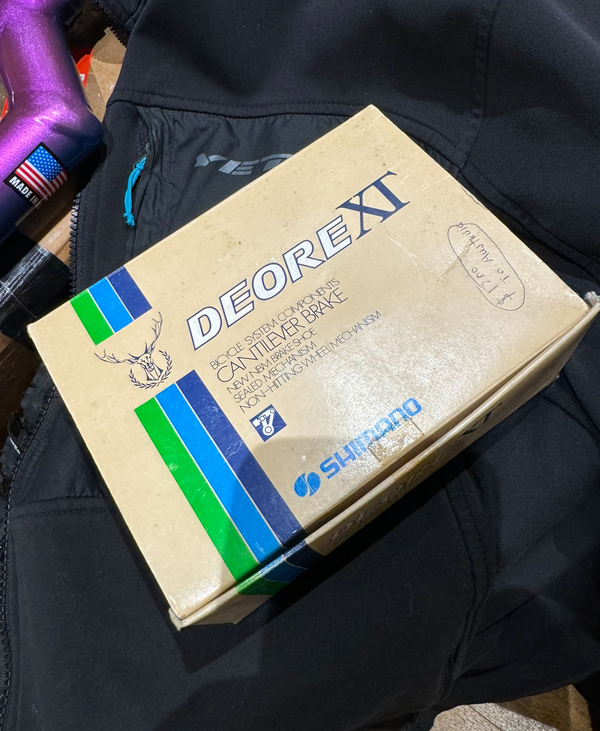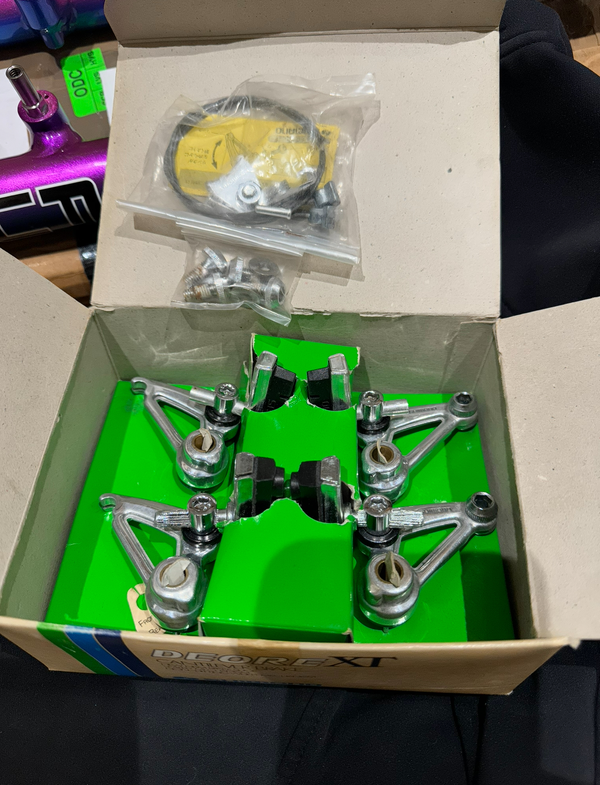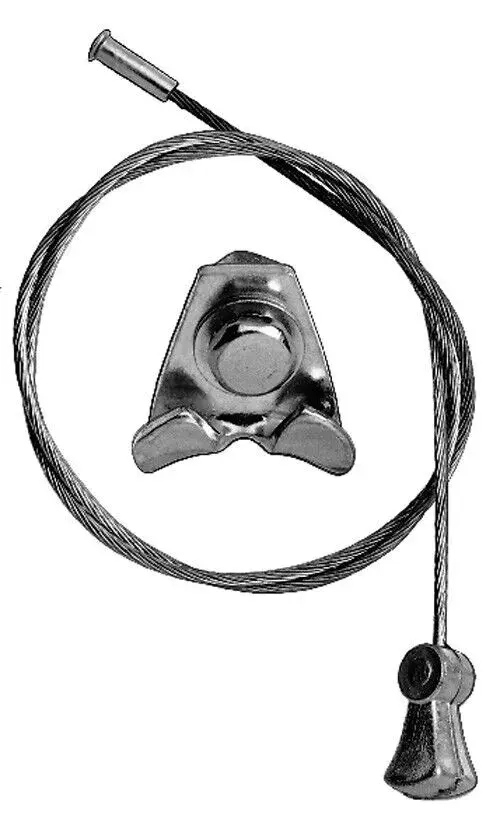I was a big fan of canti brakes up untill around 1989, when the front main brake cable on my Muddy Fox Explorer
snapped on a road descent, the straddle cable dropped into the tyre knobblys causing the front wheel
to lock up, bending the rigid front forks almost back into the downtube, oh how I flew.
Not long later discovered some little plastic device in the bike shop called a rhino horn, this
bolted through the fork crown hole to act as a catch hook, bit bloody late, by this time I had reversed
my forks and used a couple of bits of angle as splints on each fork blade, held together with some sort of gaffa
tape, obviously no front brake at this point and I couldnt afford a new fork, over time a flex developed which
made for a suspension feel.
Avoid these types of cantilever straddle cable.
View attachment 837871
.


